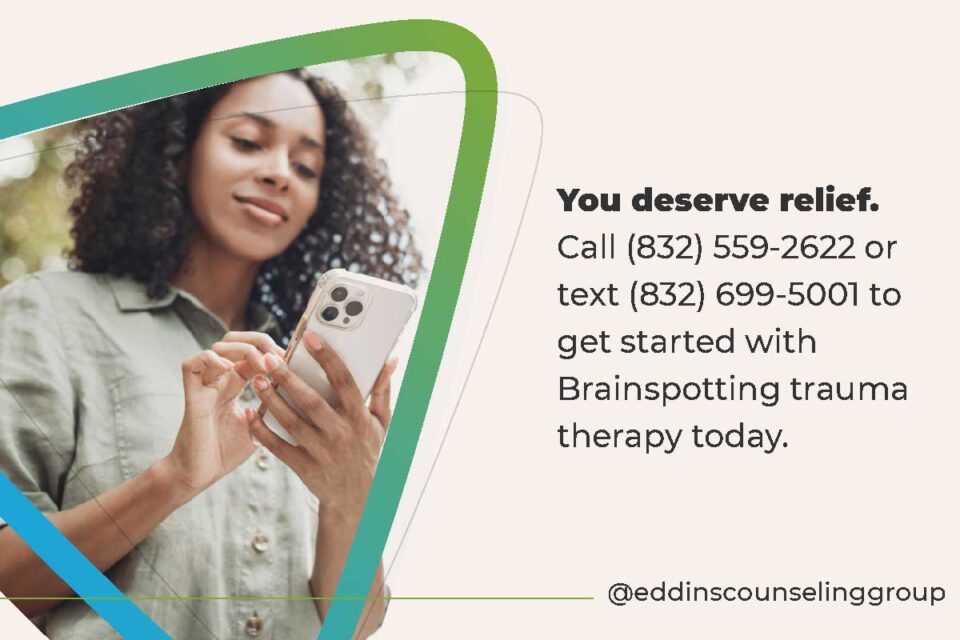July 24, 2023
Exploring Brainspotting: How Does it Work?
Written by Guest Author
Posted in Trauma, Grief & Loss and with tags: PTSD/Trauma, brainspotting, types of therapy

Could your gaze be your brain’s way of communicating? Do our sight patterns provide information without our knowing? Can humans unconsciously hold onto trauma and negative core beliefs from years past?
Mental health providers practicing Brainspotting say,” Yes!”
Brainspotting is proving to be the next non-invasive evolution in trauma therapy. And as it turns out, your eye movement may be more insightful than you could have foreseen.
So, What is Brainspotting?
Brainspotting is used in therapy sessions to identify and reorganize responses to:
Over several sessions, Brainspotting techniques activate memories or sensations in the body and connect them with a spot in your visual field.
By testing different positions in your line of sight, the brain gently alerts the body when the eyes have locked onto a brainspot.
Once a therapist has guided you to your brainspot, the brain and body start to course correct and reprocess memories, core beliefs, and sensations.
But how does this happen, you ask?
Neuro-what?
While you don’t need to be a neuroscientist to experience the benefits of Brainspotting, it’s a good idea to understand a few key concepts.
Firstly, the brain’s superhighways transport information from one area to another. These superhighways are called neural pathways.
The more a neural pathway is traveled, the more ingrained it becomes.
Brainspotting targets the deep brain, or the central nervous system, and creates new neural pathways.
Our brain’s ability to develop new superhighways is called neural plasticity.

What Does a Session Look Like?
Brainspotting may sound like a big ordeal, but the therapy is very contained and straightforward.
Imagine a game of Battleship with a blue background and tiny spaces to place the red pegs.
In Brainspotting, you are asked to bring up a memory or situation you’d like to work on. Your therapist will ask you about the sensations in your body that develop when you think about your chosen memory.
Then, your Brainspotting therapist will guide your eyes in a grid-like fashion, as if you’re tracing the blue background of Battleship.
When you find an intense point, the therapist will sit with you as you stare into that point. Over time, the intensity of your experience will shift and diminish.
Remember: Each brainspot connects to another memory or event.
If these come up during your session, that’s a clear sign your brain is working. Also, most therapists will use sound to assist in the reprocessing phase.

Who Does It Help?
Research shows that the ideal client for this method of therapy is inclusive.
From post-traumatic stress disorder (PTSD) to chronic pain and depression, and performance anxiety, the research shows that most people with mental health symptoms would benefit from Brainspotting.
Not only does it help reduce symptoms associated with mental health conditions, but this technique also improves:
- emotional regulation,
- creativity,
- relationships, and
- self-awareness.

Where Do I Sign Up?
So now you’re hooked, or at least interested in finding a specialist trained in this therapy method. When browsing, know that a Houston/Montrose therapist trained in Brainspotting has completed introductory training.
Mental health providers that are listed as certified in Brainspotting have undergone a more rigorous amount of training and supervision.
Untreated mental health symptoms impact every area of life. You deserve relief.
Call our office if you or a loved one are struggling with increased symptoms, have stalled out in talk therapy, or would like to address troubling past events.
We have competent and trained mental health providers ready to answer your questions about Brainspotting and start your healing journey.
Just sit back and let your eyes do the rest.
Additional Information on our Trauma Services:
-
Therapy Services
-
Webinars
Grounding & Self Soothing
Get instant access to your free ebook.
















